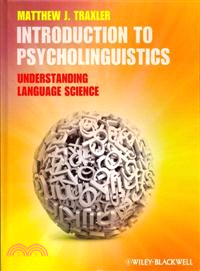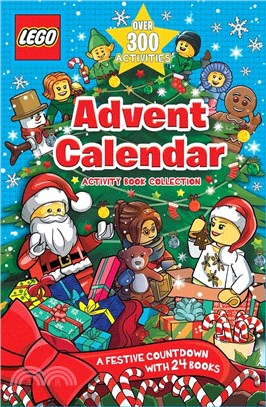Introduction To Psycholinguistics - Understanding Language Science
商品資訊
ISBN13:9781405198622
出版社:John Wiley & Sons Inc
作者:Traxler
出版日:2011/11/09
裝訂/頁數:精裝/592頁
規格:25.4cm*21cm*2.5cm (高/寬/厚)
商品簡介
- Provides a step-by-step tour through language acquisition, production, and comprehension, from the word level to sentences and dialogue
- Incorporates both theory and data, including in-depth descriptions of the experimental evidence behind theories
- Incorporates a comprehensive review of research in bilingual language processing, sign language, reading, and the neurological basis of language production and comprehension
- Approaches the subject from a range of perspectives, including psychology, linguistics, philosophy, computer science, neurology, and neurophysiology
- Includes a full program of resources for instructors and students, including review exercises, a test bank, and lecture slides, available upon publication at www.wiley.com/go/traxler
作者簡介
目次
A. Design Features of Language
B. Grammar
C. Language Origins
C.1. Communication in Non-Human Primates
C.2. Evolution and Natural Selection
C.3. Biological Foundations of Language
D. Language and Thought
E. Linguistic Determinism and Linguistic Relativity
F. The Architecture of the Language Processing System
G. Summary and Conclusions
H. Test Yourself
Chapter 2: Speech Production and Comprehension
A. Speech Production
A.1. The WEAVER Model
A.2. Speech Errors
A.3. Tip-of-the-Tongue States
A.4. Picture-Naming
A.5. The Spreading Activation Model
A.6. Limitations of Lemma Theory
A.7. Self-Monitoring and Repair
B. Articulation
C. Speech Perception
C.1. Co-Articulation
C.2. Motor Theory
C.3. The McGurk Effect
C.4. Mirror Neurons
C.5. The General Acoustic Approach
D. Summary and Conclusions
E. Test Yourself
Chapter 3: Word Processing
A. Anatomy of Words
B. Lexical Semantics
B.1. Sense and Reference
B.2. Semantic Network Theory
B.3. Associationist Accounts: HAL & LSA
B.4. The Symbol Grounding Problem
B.5. Embodied Semantics
C. Lexical Access
C.1. First Generation Models: Logogen & FOBS
C.2. Second Generation Models: TRACE & COHORT
C.3. Third Generation Models: Distributed Feature Models
D. Ambiguous Word Processing
E. The Neural Basis of Word Representation and Processing
E.1. Posterior-Anterior Organization
E.2. Category Deficits
F. Summary and Conclusions
G. Test Yourself
Chapter 4: Sentence Processing
A. Phrase Structure and Syntactic Ambiguity
B. Parsing: Two-Stage Models
C. Parsing: Constraint-Based Models
C.1. Story Context Effects
C.2. Subcategory Frequency Effects
C.3. Cross-Linguistic Frequency Data
C.4. Semantic Effects
C.5. Prosody
C.6. Visual Context Effects
D. The Argument Structure Hypothesis
E. Alternative Parsing Theories
E.1. Construal
E.2. Race-Based Parsing
E.3. Good-Enough Parsing
F. Long-Distance Dependencies
G. Summary and Conclusions
H. Test Yourself
Chapter 5: Discourse Processing
A. Models of Discourse Processing
A.1. Construction-Integration Theory
A.2. The Structure-Building Framework
A.3. The Event Indexing Model
B. Causation, Cohesion, and Coherence
C. Real World Knowledge
D. Building Situation Models
E. Inferencing
F. The Neural Basis of Discourse Comprehension
G. Summary and Conclusions
H. Test Yourself
Chapter 6: Reference
A. Referential Ambiguity
B. Characteristics of Referents that Make Co-Reference Easier
C. Characteristics of Anaphors that Make Co-Reference Easier
D. The Relationship between Anaphors and Referents
E. Binding Theory
F. Psycholinguistic Theories of Reference
F.1. Memory Focus Model
F.2. Centering Theory
F.3. Informational Load Hypothesis
G. Summary and Conclusions
H. Test Yourself
Chapter 7: Non-Literal Language
A. Types of Non-Literal Language
B. The Standard Pragmatic View
C. Metaphor
C.1. Class Inclusion and Dual Reference
C.2. Conceptual Mapping and Meaning
C.3. The Structural Similarity View
C.4. The Career of Metaphor Hypothesis
D. Why Metaphor?
E. Metonymy and Underspecification
F. Idioms and Frozen Metaphors
G. Embodiment and Non-Literal Language
H. The Neural Basis of Non-Literal Language
I. Summary and Conclusions
J. Test Yourself
Chapter 8: Dialogue
A. Gricean Maxims
B. Dialogue Is Interactive
C. Common Ground
D. Audience Design
E. Egocentric Comprehension
F. Summary and Conclusions
G. Test Yourself
Chapter 9: Language Acquisition
A. Pre-Natal Learning
B. Babies Suck
C. Infant Perception and Categorization of Phonemes
D. Solving the Segmentation Problem: The Metrical Segmentation Strategy
E. Infant-Directed Speech
F. Solving the Segmentation Problem: Statistical Learning
G. Learning Word Meanings
G.1. See-n-say
G.2. Heuristics and Biases
G.3. Syntactic Bootstrapping
H. Acquistion of Morphology and Syntax
H.1. Nativism vs. Probabilistic Learning
H.2. Acquisition of Word Category Knowledge
H.3. Acquisition of Morphology
H.4. Acquisition of Phrase Structure
I. Summary and Conclusions
J. Test Yourself
10. Reading
A. Speed Reading?
B. Eye-Movement Control and Reading
B.1. Saccades
B.2. Perceptual Span
B.3. Oculomotor and Cognitive Control Theories
C. Cognitive Processing and Reading
C.1. Writing Systems and Scripts
C.2. Learning to Read
D. Visual Word Processing
D.1. Dual-Route and DRC Models
D.2. Single-Route Models
D.3. Neighborhood Effects
D.4. Non-word Pronunciation
E. Dyslexia
E.1. Single-Deficit Models
E.2. Dual-Route Explanation
E.3. Single-Route Explanation
F. Summary and Conclusions
G. Test Yourself
Chapter 11: Bilingualism
A. Mary Potter and the Secrets of Bilingualism
A.1. Word Association
A.2. Concept Mediation
A.3. The Revised Hierarchical Model
B. Languages Are Simultaneously Active
B.1. Competition in Comprehension
B.2. Competition in Production
B.3. Effects of Fluency, Balance, and Language Similarity
B.4. Shared Syntactic Reperesentations
C. Models of Language Control
C.1. Selective Access
C.2. BIA+
C.3. Inhibitory Control
C.4. Zooming In
D. Bilingualism and Executive Control
E. Teaching Methods and Individual Differences in Second Language Learning
F. Neural Basis of Bilingualism
G. Summary and Conclusions
H. Test Yourself
12. Sign Language
A. Characteristics of Signed Languages
A.1. Phonology
A.2. Morphology
B. Lexical Access
C. Sign Language Acquisition and Language Evolution
D. Reading in Deaf Signers
E. The Neural Basis of Sign Language
E.1. Dose the right hemisphere play a special role?
E.2. Why is language left-lateralized?
F. The Effects of Deafness and Signing on Cognitive Processing
G. Cochlear Implants
H. Summary and Conclusions
I. Test Yourself
Chapter 13: Aphasia
A. Lateralization
B. Aphasiology
B.1. The Classic Model
B.2. The WLG Model
B.3. Problems with the WLG Model
C. Broca's Aphasia, Wernicke's Aphasia, and Parsing
C.1. Trace Deletion
C.2. Mapping Hypothesis
C.3. Resource Restriction
C.4. Slowed Syntax
D. Treatment and Recovery from Aphasia
E. Summary and Conclusions
F. Test Yourself
Chapter 14: Right Hemisphere Language Function
A. Speech Perception and Production
A.1. Prosody and Aprosodia
A.2. Emotional and Syntactic Prosody
B. Word Processing
B.1. Callosotomy Patients
B.2. Coarse Coding
B.3. Ambiguous Word Processing
C. Discourse Comprehension and Production
C.1. Inferences
C.2. Propositions
D. Non-Literal Language Understanding
E. What You Can Do with One Hemisphere: Outcomes of Hemispherectomy
F. Why Lateralization?
G. Summary and Conclusions
H. Test Yourself
主題書展
更多書展今日66折
您曾經瀏覽過的商品
購物須知
外文書商品之書封,為出版社提供之樣本。實際出貨商品,以出版社所提供之現有版本為主。部份書籍,因出版社供應狀況特殊,匯率將依實際狀況做調整。
無庫存之商品,在您完成訂單程序之後,將以空運的方式為你下單調貨。為了縮短等待的時間,建議您將外文書與其他商品分開下單,以獲得最快的取貨速度,平均調貨時間為1~2個月。
為了保護您的權益,「三民網路書店」提供會員七日商品鑑賞期(收到商品為起始日)。
若要辦理退貨,請在商品鑑賞期內寄回,且商品必須是全新狀態與完整包裝(商品、附件、發票、隨貨贈品等)否則恕不接受退貨。
























